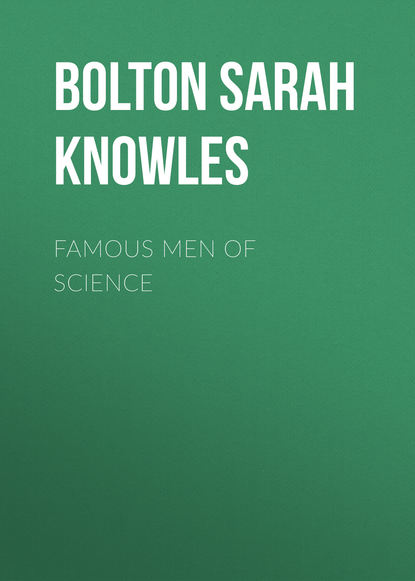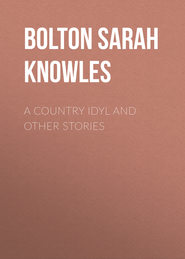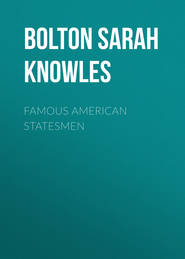По всем вопросам обращайтесь на: info@litportal.ru
(©) 2003-2024.
✖
Famous Men of Science
Настройки чтения
Размер шрифта
Высота строк
Поля
He passed his fortieth birthday, May 28, 1847, with Dr. B. E. Cotting, curator of the Lowell Institute, at whose home he had stayed through some weeks of illness. His host, seeing him standing thoughtfully at the window, said, "Why so sad?"
"That I am so old and have done so little," was the reply.
In the summer of 1847, Agassiz rented a small house in East Boston, sufficiently near to the ocean to study marine animals. He also gave lectures in New York, Philadelphia, Albany, and other eastern cities.
The next spring, the Lawrence Scientific School was organized at Cambridge, in connection with Harvard University, and Agassiz was offered the chair of Natural History (zoölogy and geology), with a salary of fifteen hundred dollars. The school owed its existence to Abbott Lawrence, formerly our minister to England.
Agassiz accepted the position, and opened his first course in April, 1848. Here he found congenial friends, Longfellow, Lowell, Prescott, Motley, Gray, Holmes, and others. M. Christinot, who had so generously helped to send him to Paris years before, came to the Cambridge home and was put in charge of it. "If your old friend," he said, "can live with his son Louis, it will be the height of his happiness."
The small plot of ground about the house became a zoölogical garden, with its tank for turtles and an alligator, its cage for eagles, a tame bear, and a family of opossums. Agassiz had already begun his Museum of Comparative Zoölogy, on the banks of the Charles River, in an old shanty. The outlook was hopeful; but he was sad at heart, for Cecile, his wife, had died since he came to America, and his children seemed too young to bring into a home where there was no mother.
In the summer of 1848, Agassiz organized an expedition of students and naturalists for the examination of the eastern and northern shores of Lake Superior. At Niagara, he saw for the first time a living garpike, the only representative among modern fishes of the fossil type of Lepidosteus. He made a careful study of the fauna and geology of the lake, and the results were published in a book. Charles Darwin wrote, "I have seldom been more deeply gratified than by receiving your most kind present of 'Lake Superior.' … I had heard of it, and had much wished to read it, but I confess it was the very great honor of having in my possession a work with your autograph as a presentation copy that has given me such lively and sincere pleasure."
Agassiz had published another book in America, in 1848, "Principles of Zoölogy," which had a large sale, and was much used in schools. In 1849, his only son, fifteen years old, came to live with his father. The following year, 1850, Agassiz married Elizabeth Cabot Gary, of Boston, a cultivated and lovely woman. His daughters, much younger than their brother, arrived from Europe the same year. M. Christinot, though urged to remain, now preferred to find another home, settled in New Orleans as pastor, and later died in Switzerland.
The winter of 1851 was spent in the examination of the Florida reefs and keys, a work undertaken at the request of Prof. A. D. Bache, at the head of the United States Coast Survey. The results were valuable in showing "how far the soil now building up from accumulations of mud and coral débris was likely to remain for a long time shifting and uncertain, and how far and in what localities it might be relied upon as affording a stable foundation," for building lighthouses, etc. Agassiz brought back for his museum a fine collection of corals, of all varieties and in all stages of growth, with drawings made on the spot, from the living animals.
This year he accepted a professorship at the medical college in Charleston, S. C., lecturing during the three winter months, between his autumn and spring courses at Cambridge. The overwork finally resulted in a dangerous illness, and he was obliged to discontinue it in 1853. The year previous he received the Prix Cuvier for his "Fossil Fishes." His fond mother wrote: "This has given me such happiness, dear Louis, that the tears are in my eyes as I write it to you."
He now issued a circular asking for collections of fishes from various fresh-water systems of the United States, and responses came from every direction. New England captains, when they started on a cruise, took out cans, furnished by Agassiz, for collections in distant ports. Fishermen and farmers, indeed all classes, heartily joined in coöperating with the man who had said in the University at Munich, "I will be a leader of others," and he had reached the mark which he set for himself. In 1854 he was urged to accept a professorship in the recently established University of Zurich, Switzerland; but he declined, for he had one definite aim in America, to found a great museum, where the best methods of study could be adopted. He said in his "Fossil Fishes": "Possessing no fossil fishes myself, and renouncing forever the acquisition of collections so precious, I have been forced to seek the materials for my work in all the collections of Europe containing such remains; I have, therefore, made frequent journeys in Germany, in France, and in England, in order to examine, describe, and illustrate the objects of my researches; but, notwithstanding the cordiality with which even the most precious specimens have been placed at my disposition, a serious inconvenience has resulted from this mode of working, namely, that I have rarely been able to compare directly the various specimens of the same species from different collections, and that I have often been obliged to make my identification from memory, or from simple notes, or, in the more fortunate cases, from my drawings only. It is impossible to imagine the fatigue, the exhaustion of all the faculties, involved in such a method." He hoped to found a museum where students should have specimens for work, ready for their use.
In the winter of 1855, Agassiz, resumed his public lectures, as his salary of fifteen hundred was insufficient to support his family, but when the spring came he found himself exhausted by the extra work.
And now his noble wife thought out a plan to aid him. She opened a school in their house, for young ladies. Agassiz's surprise and pleasure knew no bounds when he was informed of the project. He immediately took charge of the classes in physical geography, natural history, and botany, giving a lecture daily on one or other of these subjects. The school, with sixty or seventy girls, was continued for eight years, Agassiz having the coöperation of his brother-in-law, Professor Felton, the noted Greek scholar, and other distinguished men. This school was a blessing in more ways than one. All these years, the debts incurred by the publication of the "Fossil Fishes," and the glacial investigations, had burdened him. The wonder was that the genial, untiring worker could labor at all under this depressing load. Noble devotees to science! What have they not suffered to advance the cause of knowledge! We sit by our pleasant firesides and read what others have wrought for us, perhaps in want and sorrow of soul, and we forget to be grateful or to help lift burdens.
This school opened by the helpful wife made Agassiz a free man – no longer shackled by that worst form of slavery, debt. Well said John Ruskin: "My first word to all men and boys who care to hear me is, don't get into debt. Starve and go to heaven, but don't borrow… Don't buy things you can't pay for!"
Indefatigable, versatile, comprehensive in mind, Agassiz at once planned another great work, to be published in ten volumes, though it was finally reduced to four: "Contributions to the Natural History of the United States." Mr. Francis C. Gray of Boston, a personal friend and a lover of letters and science, set the subscription before the public. Very soon, to Agassiz's great delight, he received the names of seventeen hundred subscribers, at twelve dollars a volume.
He had now reached his fiftieth birthday, completing his first volume of the new work on that day. His students serenaded him, and Longfellow wrote, to be read at the "Saturday Club," composed of Hawthorne, Holmes, Lowell, Dana, and others, this exquisite poem: —
It was fifty years ago,
In the pleasant month of May,
In the beautiful Pays de Vaud,
A child in its cradle lay.
And Nature, the old nurse, took
The child upon her knee,
Saying: "Here is a story-book
Thy Father has written for thee."
"Come wander with me," she said,
"Into regions yet untrod,
And read what is still unread
In the manuscripts of God."
And he wandered away and away
With Nature, the dear old nurse,
Who sang to him night and day
The rhymes of the universe.
And whenever the way seemed long,
Or his heart began to fail,
She would sing a more wonderful song,
Or tell a more marvellous tale.
So she keeps him still a child,
And will not let him go,
Though at times his heart beats wild
For the beautiful Pays de Vaud;
Though at times he hears in his dreams
The Ranz des Vaches of old,
And the rush of mountain streams
From glaciers clear and cold;
And the mother at home says, "Hark!
For his voice I listen and yearn;
It is growing late and dark,
And my boy does not return!"
This year, 1857, Agassiz received an unexpected honor – a call to one of the most coveted places at the Jardin des Plantes; the chair of palæontology in the Museum of Natural History, Paris. Though obliged to refuse it because he considered his life-work to be in America, he appreciated the favor as also the bestowal of the Order of the Legion of Honor, and the Copley medal from England. Twenty-seven years before, he had received in Paris the aid of Humboldt in his destitution; now, two hemispheres competed for his services.
The following year, 1858, Mr. Francis C. Gray died, leaving fifty thousand dollars for the establishment of a Museum of Comparative Zoölogy, to be used neither for buildings nor for salaries, but purely for scientific needs.
"All things come round to him who will but wait," says Longfellow, in the "Falcon of Sir Federigo." Other gifts soon followed. Harvard University gave land for the site of the building. The Massachusetts Legislature gave lands to the amount of one hundred thousand dollars. Over seventy-one thousand was promptly subscribed by citizens of Boston and Cambridge. Agassiz contributed all his collections, worth thousands of dollars. The corner-stone of the museum was laid one sunny afternoon in June, 1859, and then the happy Agassiz hastened across the ocean, to rejoice with his mother, in her home near the foot of the Jura. She was glad and proud now that he had become a naturalist.
The museum was dedicated November 13, 1860. The plan included a main building 364 feet long, with wings 205 long, the whole enclosing a hollow square. The lecture rooms were at once opened. Especially welcome were teachers of schools, for whom admittance was free. His lectures were open to women as well as to men. This would naturally be expected, from the broad-mindedness of the man, and the respect he must have had for the capacity of woman, from such a mother and such a wife. "He had great sympathy," says Mrs. Agassiz, "with the desire of women for larger and more various fields of study and work." To such men women can never be too grateful.
In 1863, he helped to organize the National Academy of Sciences. He frequently gave lectures in the large cities, using the money for the further development of the museum.
In 1865 he started, with his wife and several assistants, for sixteen months of scientific investigation in Brazil, the expenses borne by his friend, Mr. Nathaniel Thayer, of Boston. He writes to his mother, —
"All those who know me seem to have combined to heighten the attraction of the journey, and facilitate it in every respect. The Pacific Mail Steamship Company have invited me to take passage with my whole party on their fine steamer, the Colorado. They will take us, free of all expense, as far as Rio de Janeiro, – an economy of fifteen thousand francs at the start… I seem like the spoiled child of the country, and I hope God will give me strength to repay, in devotion to her institutions and to her scientific and intellectual development, all that her citizens have done for me…
With all my heart,
"Your Louis."
The story of this expedition has been told, chiefly by Mrs. Agassiz, in that most interesting volume, "A Journey in Brazil."
On Agassiz's return, he gave a course of lectures before the Lowell Institute, and the Cooper Institute, New York, spending the summer at his pleasant seaside home and laboratory at Nahant.
The fisherman at Nahant would pull two or three miles to bring him a rare fish; and only for the pleasure of seeing him rush out of his little laboratory, crying: "Oh! where did you get that? That is a species which goes as far as Brazil. Nobody has ever seen it north of Cape Cod. Come in, come in, and sit down!"
In 1868, Agassiz, invited by Mr. Samuel Hooper, joined a party of friends in an excursion to the Rocky Mountains. This year he was appointed non-resident professor at Cornell University, Ithaca, New York.
The Massachusetts Legislature now gave seventy-five thousand dollars, and private individuals an equal sum, to provide for the new collections at the museum. Later, the museum received from the Legislature twenty-five thousand more, and a birthday gift to Agassiz, of one hundred thousand dollars, was also used by him for his precious work. September 15, 1869, at the Humboldt Centennial Celebration, Agassiz delivered an eloquent address before the Boston Society of Natural History, and the "Humboldt Scholarship" was founded at the museum. The bread cast upon the waters by Humboldt had been found after many days.










